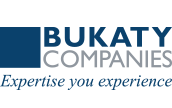All business insurance policies (e.g., workers’ compensation, general liability, automobile) can be audited by the insurance carrier to verify a business’s reported risk exposure. Typically policies are audited at the end of a policy period, however, high-cost claims or inconsistencies in information can trigger an audit at any time.
Insurance carriers utilize several different methods for conducting an audit. Smaller, less-complex policies may only require the insured to assemble and send the necessary information to the carrier or have the information available when a telephone auditor calls.
Larger, more complicated policies are handled by a field auditor who will schedule an appointment and visit your business. It is best to schedule and complete this audit as soon as possible after the policy has expired while the exposure information is still fresh and readily available.
Typically, an auditor will ask important questions about your business. If you cannot be present to answer questions, someone familiar with the specifics of your entire business operations should be available.
If your business has never been subject to an audit and you have questions, contact Bukaty Companies Property & Casualty, and your dedicated consultant will better explain the process.
Items required to complete an audit
- Payroll records, including federal 941 tax reports, state unemployment reports and individual earnings records. Separate totals for bonuses, vacation, sick pay and overtime should be kept when applicable.
- Employee records, including the number of employees, and hours, days or weeks worked annually.
- Sale journals, including all goods or products sold, rented, and/or distributed, as well as services, repairs and installations. Sales or excise taxes collected separately and submitted to the government need to be identified in order to be excluded from the audit.
- Check register and cash disbursements showing subcontractors, material costs and payments for casual labor.
- Income statements including subcontracted costs used to determine the costs.
- Certificates of insurance showing the required limits of liability and indemnification language from subcontractors used during the policy period.

.jpg?width=750&name=iStock-914725762%20(1).jpg)